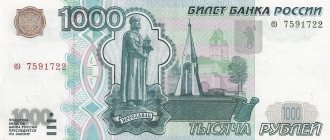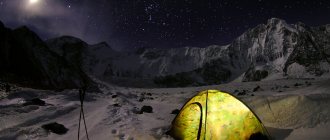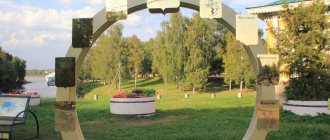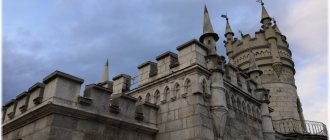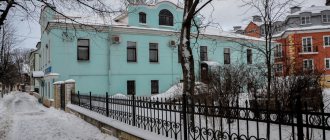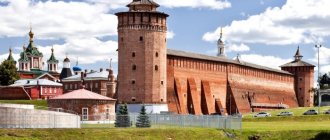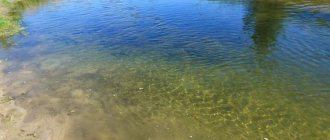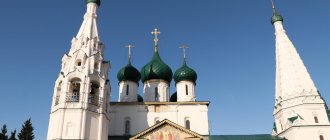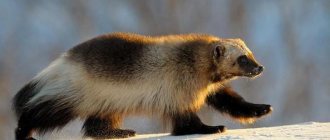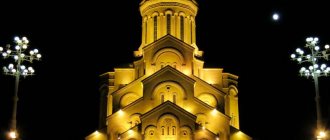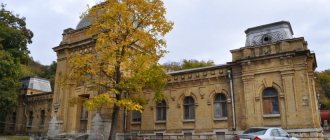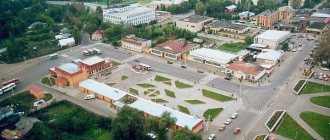| Sights Routes What to see in different seasons Stories, routes and tourist tips Where to stay in Karelia Excursions around Karelia |
Traveling to Karelia by car is a great idea for exploring the northern region. When traveling by car, you can make stops in picturesque places, cover long distances and not spend money on excursion transfers. It's best to go here for a week, but weekend trips are also popular. Karelia by savage by car is an exciting immersion into the world of wild nature with mirror lakes, rocky coastlines, dark forests and the amazing spirit of antiquity.
It should be taken into account that the roads to the most hidden natural places are most often in poor condition, are dirt roads, or do not exist at all. Some attractions need to be reached by SUV, but this does not apply to the most popular sites; as a rule, tourists travel in cars. Holidays in Karelia by car mean freedom of movement and visiting wild and secluded places.
Photo: © Natalia Semchina
What to take with you: tent, documents and more
The list of things for the trip depends on many factors: time of year, comfort of the car, duration of the trip.
Let's focus on the standard set:
- documents (personal and for the car);
- cash (there may be difficulties with cashless payments and ATMs);
- first aid kit (standard set + individual medications if necessary);
- gadgets (for communication, for shooting, chargers for them, portable batteries if possible);
- tools (at least a minimum set for troubleshooting minor faults);
- water (drinking and technical);
- personal hygiene items (napkins, towels, soap, insect sprays, etc.);
- personal belongings (based on the number of days of travel);
- snack for the road (take based on your preferences).
Even if the trip takes place in the summer, you should definitely take warm clothes with you.
If you are traveling as “savages”, you will need camping equipment: tents, gas burners, sleeping bags, dishes, table and chairs, food, thermal bag, thermos, matches, umbrellas, etc.
Nowadays it is very convenient to travel - there are markets, shops, cafes everywhere along the road. If you need something along the way, you can always buy it.
Build a route using your navigator
Everyone who is planning a trip to Karelia is scared by the lack of good mobile communications. But nowadays this is not a problem at all. In addition to standard applications like Yandex. Navigator" or "Google Maps", just install any of the proposed ones (they work without the Internet):
- Maps.me (our choice);
- OsmAnd;
- 2 GIS;
- SYGIC.
Download maps in advance and preferably plan routes in advance, then no problems will arise during the trip.
Stories, routes and tourist tips
It will be easier to plan a trip to Karelia by car if you read reviews from tourists. From them you will learn which routes travelers take and what they recommend visiting. Those traveling to Karelia by car are advised to acquire paper maps and download offline maps for navigation in places where there is no connection. Another common recommendation is to book your accommodation in advance, especially during high season. It is convenient to explore the sights of Karelia by car in the summer, since driving on the roads at this time is quite comfortable, but in the warm season a large number of tourists come here, so be prepared for queues at the entrance to the top places of the republic.
To Karelia by car - reviews from tourists:
- Maksim Starostin - “Compassion and Grace. For the weekend - to Karelia!
- Victor Martyanov - “The Great Northern Journey. Part 6"
- Andrey Panin - “Around Ladoga by car”
- gebbelev - "Drang nach Norden"
- Anastasia - “Road trip to interesting places in Karelia and beyond”
Read reviews from tourists about traveling to Karelia
Solovetsky Museum-Reserve Photo: © gebbelev
Trip from St. Petersburg to Petrozavodsk
The distance from St. Petersburg to Petrozavodsk along the highway is about 430 kilometers, that is, 5-7 hours on the road, excluding stops and traffic jams. There are two roads: through Sortavala and through Lake Ladoga. Choose depending on the purpose of your trip. Maps of two different routes from St. Petersburg and details of the trip can be found here.
Infrastructure
There will be a sufficient number of different gas stations along the road if the route goes along the main highways. The most popular are Gazpromneft, Lukoil, Rosneft. There are also many lesser known ones. So there won't be any problems. At the gas station you can visit the toilet, buy something you need in the store and even have a snack.
If you don’t like “filler” food, there is always the opportunity to stop for lunch (breakfast, dinner) at a roadside cafe. There are about 20 of them along the route from St. Petersburg. Accordingly, from Moscow there are twice as many. The most popular among travelers are “Farmer”, “Spring”, “Karat”, “Topaz-Cola”, “Comfort”, “Samovar”.
TIP: There are not many gas stations in Karelia itself, but they exist. If you are driving far away from the highway, fill the tank full.
Where to stay inexpensively on the road?
Since the distance is not so short, overnight stops are unlikely to be required. You can always relax in parking lots at gas stations or cafes.
But if you still get tired on the road, then there are a small number of motels and hotels along the road - “Noah’s Ark”, “Transit”, “At the Spring”, “Zarechnaya”, “Inema”, “Yarn” and a dozen others. Along the way you will meet small settlements - you can also find a place to relax in them.
There are sufficient numbers of campsites already on the territory of Karelia. Plan your route in advance and choose the most suitable parking lots.
Interesting sights in spring and summer
The list of places to visit can be written for a very long time, but let’s highlight the main ones:
- Petrozavodsk itself (embankment of Lake Onega, museums, theaters, architectural sights).
- Valaam is a holy island.
- Solovki is an entire archipelago of beautiful islands, the Solovetsky Monastery. The archipelago itself is located in the Arkhangelsk region, but you can get there from Kemi and Sortavala by water.
- The Kivach waterfall and Marcial waters are amazing places: you can admire them, drink some water, and even undergo treatments with healing mud.
- Kizhi Island - holy monuments of wooden architecture.
- Sortavala is a small ancient town with Finnish architecture.
- Ruskeala Mountain Park - stunning views during the day and stunning illuminated views at night.
- National parks and multiple waterfalls - choose according to your interests.
What to see in Karelia in different seasons
Holidays in Karelia by car are an opportunity to see a lot, but it is worth remembering seasonal problems. For example, in the fall the road to natural attractions can be washed out by rain, in the spring you can get stuck in the mud, and in the winter you simply need to drive with winter tires. Before your trip, study information about the condition of the roads along your route. In general, most attractions can be reached all year round. Water transport to the islands does not go during storms; navigation is closed in September.
White Sea Photo: © Victor Martyanov
Summer
What to see in Karelia in summer by car? This is an excellent time to travel throughout the republic, as the roads at this time of year will be in good condition. They usually go to Karelia by car in the summer for a long time, explore the surroundings of Ladoga and Onega , and also go to the White Sea . The season is suitable for trips to national parks and recreation on lakes; most sites can be reached by car.
This is a period of white nights, many open-air festivals and navigation along lakes and rivers. Summer is a good time to watch white whales near Belomorsk . The downside will be a large flow of tourists and an abundance of blood-sucking midges, but there is another plus - the opportunity to pick berries. Many travelers go to Karelia with children by car in the summer, choosing accommodation in guest houses and recreation centers near picturesque lakes with a variety of water activities.
You can go around the lakes of Karelia by car in the warm season to relax not only on the rocky shores, but also on the sandy beaches. These can be found in the eastern part of Lake Ladoga , for example, near Ilyinsky.
Detailed advice on what to see in Karelia in summer
Lake Onega (Medvezhyegorsk) Photo: © Victor Martyanov
Autumn
What to see in Karelia by car in autumn? This is the season for connoisseurs of the changing colors of nature, so first of all it is worth looking at the forests and lakes in the national parks and reserves of the republic. The most accessible are “Ladoga Skerries” , “Kivach” . the Ruskeala mountain park looks very picturesque, surrounded by marble rocks and a golden forest.
Ruskeala Photo: © Sergey Shaburov
Winter
During the cold season, northern nature captivates travelers. By car you can get to the estate of the local Father Frost , to the sled dog kennel , to the Ruskeala park with fairy-tale evening illumination and the ice-free waters of Kivach . In winter, it is worth booking snowmobile tours to famous sights of the republic. At this time, it is best to watch the northern lights; by car you can go away from the cities, to cozy and colorful villages.
Detailed advice on what to see in Karelia in winter
Northern Lights Photo: © Galina Gorshenina
Spring
This is the best time to explore Karelia waterfalls by car. During the flood period, they appear in full power, throwing violent streams of water down. How to get to Karelia waterfalls by car? Getting to the most famous ones is not difficult ( Kivach , Girvas ). There is a dirt road leading to the less popular ones ( White Bridges , Lower Koirinoja , Roskelakoski ). Spring comes slowly, in the first month the landscapes may resemble winter ones, and closer to summer you can go rafting.
What beautiful places to see in autumn?
All the same places are suitable for visiting as in summer. But in the fall, beautiful landscapes are added, mesmerizing with their beauty. You can visit:
- Pine forests – walks in the fresh air, picking mushrooms and berries.
- Ladoga skerries - excellent fishing, boating, admiring autumn nature.
- Mount Filina is a former World War II bunker and military museum located near Sortavala.
- Janisjärvi is a mystical lake where you can relax and go fishing.
Where to go in winter?
All of the above attractions are also suitable for visiting in winter. We can highlight:
- Paanajärvi National Park is an untouched nature; you can climb one of the highest mountains in the republic - Nuorunen.
- Mount Vottovaara is an ancient cult complex of the Sami.
- Skiing, winter fishing, snowmobiling.
- Husky sledding is the largest nursery in Russia in Karelia.
- Another great idea is to celebrate the New Year and spend Christmas.
See all the main attractions of the Republic of Karelia and a map for independent travel here.
History of the formation of Karelia
The first traces of human presence on the territory of modern Karelia date back to the Ice Age—VII–VI millennium BC.
Thanks to natural conditions, local residents engaged in hunting, fishing and gathering. By the end of the 1st millennium BC. e. The main ethnic composition was formed - Karelians, Vepsians and Sami. At the beginning of the new era, the Viking state of Radbar existed in this territory. According to Novgorod letters, at the beginning of the 11th century, the Lithuanian army attacked the northern lands. By the 14th century they became part of the Novgorod Republic, and after that of the Novgorod state. After the war with the Swedes, under the terms of the Stolbovo Peace at the beginning of the 17th century, the northern lands went to Sweden. And a hundred years later, as a result of the Northern War and the Peace of Nystad, they became part of the Russian state.
At the beginning of the 19th century, a new administrative entity arose with its center in Petrozavodsk - Olonets province. After the revolution of 1917, part of it was transformed into the Karelian Labor Commune. And three years later, the Karelian Autonomous SSR was created on its basis. In the early 40s of the 20th century, it was renamed the Karelo-Finnish Republic, then again returned to the KASSR version. And only after perestroika in 1991 the administrative entity received its modern name - the Republic of Karelia.
Vacation with children
Mostly families come for active recreation: snowmobiling and skiing in winter, cycling in summer, swimming in reservoirs, kayaking, catamarans and boats.
Children will be interested in visiting the dog nursery “Husky in Karelia. White Fleece”, a deer farm on the territory of the Estate of Karelian Father Frost, the Karelian Zoo and the “Three Bears” zoo complex. There are a large number of children's health camps here. Rest can also be useful for them: the child will learn a lot about the history of their ancestors and see how they lived.
Sights of Karelia by car
Seeing Karelia on your own by car is an opportunity to visit the most beautiful places: waterfalls, national parks, mountains. In addition to natural attractions, in the republic you can see ancient monuments of different nations. It’s worth going to Karelia by car to travel around different parts of the region.
Ladoga Skerries National Park
When traveling to Karelia by car, where is it worth visiting? If you are driving along the A-121 highway, you can make a stop at the Ladoga Skerries National Park . This is an area with picturesque rocky islands on the northwestern and northern shores of Ladoga. You can go boating and fishing on the lake; berry and mushroom tours are organized on the territory. The rocky landscapes of the skerries are an excellent start to getting to know the harsh nature of the republic.
If you are exploring Karelia by car, then before the Ladoga Skerries you can turn a little towards Finland near the city of Lakhdenpokhya to visit the Mount Owl museum . It is located in a bunker in the rock and is dedicated to military events, as well as the geological history of Karelia. Another unusual object before the “Owl Mountain” is a proto-Sami labyrinth near the village of Alho, near Mount Ahmavaara.
Details: “Ladoga Skerries”
Ladoga skerries (Haukkasaari island) Photo: © Galina Gorshenina
Sortavala
Sights of Karelia by car on the map are located in different parts of the republic. From the city of Sortavala it is convenient to go to natural beauties that have become famous among tourists. In the town itself you can see ancient buildings and appreciate the picturesque view of the islands of Lake Ladoga . Finno-Ugric peoples have long lived in this territory, and archaeological finds from different eras have been discovered here. The city is included in the list of historical settlements in Russia.
Among the interesting buildings in Sortavala are monuments of Finnish architecture and wooden buildings ( forestry building , museum of the northern Ladoga region , former fire station Town Hall building ). Tourists also visit the exhibition hall of Kronid Gogolev , an artist and woodcarver. A good observation deck is in Vakkosalmi Park , not far from the city there is Mount Paaso of low height, but with panoramic views of the surrounding area.
In detail: sights of Sortavala
Forestry building in Sortavala Photo: © vladkonst
Mountain Park "Ruskeala"
A holiday in Karelia by car certainly includes a visit to the Ruskeala mountain park . The road from Sortavala will take about half an hour. Here you will see a beautiful lake surrounded by marble rocks and forest. The canyon appeared on the site of a former marble mining site. Having reached “Ruskeala” in Karelia by car, here you can follow a walking route, see the Italian quarry, go underground and walk through the adits, or take a boat ride on the lake. Each excursion is paid separately from the cost of the entrance ticket. There are various entertainment options on site, catering to different seasons. You can also explore the ruins of an abandoned marble and limestone factory.
On the way to the mountain park you will see the Ruskeala waterfalls . These are 4 waterfalls, the most famous of which is Akhvenkoski . Their view is not the most impressive, but they attract with their “film career”; the waterfalls became the filming location for the Soviet film “The Dawns Here Are Quiet” and the Russian film “The Dark World”. From the park you can get to the Karelian Zoo in 20 minutes.
More details: “Ruskeala”
Ruskeala Photo: © Victor Bashkir
Balaam
One of the places to see without a car in Karelia, but which travel around the republic is rarely complete without, is the island of Valaam . During navigation (May - September), water transport departs from Sortavala to the islands of the Valaam archipelago of Lake Ladoga. This place is highly revered among Orthodox Christians and popular among tourists for its history, atmosphere and views. They say that the Apostle Andrew the First-Called visited these places and installed a cross in the mountains. Here is the Valaam Transfiguration Monastery and several monasteries. The exact time of the founding of the monastery on the island is unknown; they call it the 11th–12th centuries or the 14th–15th centuries.
If you are traveling around Karelia by car on your own, it is worth buying boat tickets to Valaam in advance, since during the high season, places can be bought up by travel companies. The road from Sortavala will take about an hour on high-speed “meteors”.
Details: Valaam Monastery
Valaam Photo: © Valeria Belousova
Road to Petrozavodsk
It will take from 3 hours to travel from Sortavala to the capital of the republic - Petrozavodsk . The sights of Karelia by car along the route include natural beauty and small villages; you can also see industrial buildings, for example, stop at the Lyaskela hydroelectric station . It is worth leaving the highway to look at the White Bridges waterfall , recognized as a protected natural monument. These are two waterfalls at a distance of 30 m from each other, the larger of them falls from a height of 19 m. You will need to leave the car and walk about 4 km to the waterfalls; you can drive further on an SUV.
Beautiful places in Karelia by car are also original villages with ancient buildings. Further along the road near Vedlozero you can turn to the village of Kinerma , included in the list of the most beautiful villages in Russia. This is a traditional Karelian settlement with monuments of wooden architecture. The village was mentioned in sources of the 16th century; today you can see its harmonious and original appearance.
Kinerma village Photo: © Konstantin Pavlov
Petrozavodsk
In Petro there is Onezhskaya embankment , a landscaped walking area with a view of the lake and various sculptures. Here you will see a monument to Peter I , it was this ruler who ordered the creation of factories from which the history of the city is traced. With children it is worth going to a recreation park with attractions. While exploring the city, go to the Alexander Nevsky Cathedral in the classicist style (19th century). To learn more about the city, its history and culture, visit the museums: National Museum of the Republic , Museum of Industrial History of Petrozavodsk , Museum of Fine Arts , Museum of the Polar Odyssey .
From Petrozavodsk you can go to the Three Bears zoo complex (70 km) on the shore of Syamozero. 20 km from the republican capital is the patrimony of the Karelian Father Frost Talvi Ukko , where you can come not only in winter, but also in summer, visit the sled dog nursery and the reindeer farm. Not far from Petrozavodsk there is also the village of Sailors with a sled dog kennel. By SUV you can get to Mount Vottovaara , if you set aside two days for it, since the road will take 4–5 hours.
In detail: sights of Petrozavodsk
Onega embankment Photo: © Victor Bashkir
Kizhi
On Lake Onega there is the famous open-air museum of wooden architecture - Kizhi . On the 5.5 km long island, attractions are divided into several sectors and villages. Here you will see churches, residential buildings, barns and other buildings of the 17th-20th centuries. The ensemble of the Kizhi Pogost includes the Church of the Transfiguration of the Lord, which is crowned with 22 domes. The iconostasis of the church consists of more than 100 icons on 4 tiers. The exhibition of the museum-reserve is not just architectural monuments, it helps to learn more about the traditional life of peasants of past centuries, about Karelian, Vepsian and Russian villages.
This is another attraction that is not accessible by car, but is visited by travelers traveling to Karelia by car. Water transport departs from Petrozavodsk to the island in the warm season, and hovercraft in winter.
More details: Kizhi Museum-Reserve
Kizhi Photo: © Victor Bashkir
Kivach waterfall
What to see in Karelia by car? About 80 km from the center of the capital of the republic is the Kivach waterfall . It is located on the territory of the reserve of the same name, in front of which there is parking. Visiting the reserve is paid, open all year round. In winter, the waterfall does not freeze completely. This is a flat waterfall with 4 descents, its total height is approximately 10 m.
The view of Kivach does not impress everyone equally, but it’s worth wandering around it a little longer and feeling its picturesqueness. The waterfall inspired the writing of poetry by such poets as G. Derzhavin, F. Glinka and others. In the 19th century Emperor Alexander II came here.
Details: Kivach waterfall
Kivach Waterfall Photo: © Victor Bashkir
Belomorsk and surroundings
A route to the sights of Karelia by car may include a trip to the waters of the Arctic Ocean - the White Sea. It will be convenient to stay in Belomorsk and travel from there to natural places. At Cape Beluzhiy you can see beluga whales, a 10-minute drive from the center of Belomorsk - rock paintings made before our era - Belomorsk petroglyphs . In the city itself you will see quite a lot of abandoned and destroyed buildings with the atmosphere of a distant province.
If you have time, go to the village of Virma (37 km), where the ancient five-domed wooden church of Peter and Paul of the 17th century has been preserved. The road to the village is not the most improved. 115 km from Belomorsk is the city of Kem with the wooden Cathedral of the Assumption of the Blessed Virgin Mary , which houses icons of the 17th century. 10 km from Kemi is Rabocheostrovsk , where you can see the scenery for P. Lungin’s film “The Island” - a hut rebuilt into a church. Usually people come here to go on a boat trip to the museum-reserve on the Solovetsky Islands in the White Sea (Arkhangelsk region). Here is the Solovetsky Monastery , founded in the 15th century and recognized as a UNESCO protected site. 260 km from Belomorsk is the village of Kalevala , from which the spirit of ancient epics emanates. The village is nicknamed rune singing, since here the Finnish folklore collector Lönnrot wrote down the runes that formed the basis of the folk epic “Kalevala”.
In detail: sights of Belomorsk
Scenery for the film “The Island” Photo: © Juliette17
Paanajärvi National Park
Paanajärvi National Park is located 500 km from Belomorsk . This is the place where lovers of wild and pristine northern nature should go. The territory borders Finland and approaches the Arctic Circle. Before visiting, obtain permission from the park’s visitor center in the village of Pyaozersky. You can get to the visitor center along a regular road, and then a dirt road leads to the park (59 km).
On an area of more than 100 thousand hectares you can see Lake Paanajärvi, Mount Nuorunen , rivers, swamps, waterfalls, and spruce forests. Hiking, water and snowmobile routes have been developed, lasting from several hours to days. There is secure paid parking on site.
More details: Paanajärvi
To Karelia with a tent by car
If you are traveling in your own car, it will be convenient to take a tent with you and camp in it in places you like along the way. However, it should be noted that you need to look for a good descent to the lakes. Therefore, many choose to stop at equipped campsites. For a holiday in Karelia with a tent by car, we recommend convenient places with access to lakes: Sandal , Palvozero , Syamozero , you can also find descents to Ladoga and Onega .
Review materials: Guide to Karelia
Sights of Karelia
Lake Ladoga Photo: © Irina Dementieva
Around Lake Onega
The route around Lake Onega is a little more than 2000 kilometers: from Petrozavodsk to Kondopoga.
This path can be covered in 3 days, but then you won’t be able to visit many places. Therefore, plan on 7 to 12 days for this trip to see all the corners. It depends on you how long your trip will last. There are simply a colossal number of attractions and beautiful places along the way.
Tourist card
The map shows the names and coordinates of the most interesting places that you can visit while traveling around Lake Onega. The map can also be downloaded from this link.
Read about how to get to Cape Besov Nos in the article about Karelian petroglyphs here.
Traveling around Russia: Karelia 37 photos and 22 reasons to visit the republic
Karelia is one of the most amazing corners of our country. Travelers have always found, are and will continue to find inspiration here. We present 37 photographs of enchanting Karelia and 22 reasons why you should definitely go here.
First, some general information. The republic is located in the northwestern part of Russia. In the northeast it is washed by the White Sea. The main relief of the republic is a hilly plain, turning in the west into the Western Karelian Upland. The glacier, retreating to the north, greatly changed the topography of Karelia - moraine ridges, eskers, kamas, and lake basins appeared in abundance.
A few words about the weather
The weather in Karelia is changeable. The climate itself is quite mild, with a lot of precipitation, and varies in Karelia from maritime to moderate continental. Winter is snowy, cool, but usually without severe frosts. Summer is short and warm, also with frequent rains.
Northern night with boats. Author - Igor Gorshkov
The fauna of Karelia is incredibly rich: 285 species of birds live here, 36 of which are listed in the Red Book of Karelia. The most common birds are finches. Upland game can be found - hazel grouse, black grouse, ptarmigan, wood grouse. Every spring, geese fly to Karelia from warm countries. Birds of prey are common: owls, hawks, golden eagles, marsh harriers. Among the waterfowl: ducks, loons, waders, many seagulls and the largest of the diving ducks of Karelia - the common eider, valuable for its warm down.
The most famous Karelian nature reserves are: “Kivach”, “Kostomuksha”, and the Kem-Ludsky section of the Kandalaksha nature reserve. Ecological routes are laid out on their territories, and nature museums operate.
20 reasons to go to Karelia
And now - in more detail. Why do you need to go to Karelia and what to see there?
Visit the Solovetsky Monastery
Spaso-Preobrazhensky Solovetsky Monastery is located on the Solovetsky Islands. It arose in the 1420s–1430s, rebuilt in stone by the labors of St. Philip (Kolycheva). In 1669–1676 the monastery was besieged by tsarist troops as one of the centers of resistance to the Nikonian transformations. Under Soviet rule, the country's first special purpose camp operated on the territory of the monastery. A significant part of the prisoners were so-called “political” - the clergy, officers of the white movement, Socialist Revolutionaries, and intelligentsia. Monastic life was resumed on October 25, 1990. In 1992, the complex of monuments of the Solovetsky Museum-Reserve was included in the UNESCO World Heritage List, and in 1995 - in the State Code of Especially Valuable Objects of Cultural Heritage of the Peoples of the Russian Federation.
Valaam Islands. Author - Serge (https://500px.com/)
Visit Valaam Monastery
Valaam Spaso-Preobrazhensky Monastery is located on the islands of the Valaam archipelago. After the October Revolution, Valaam became part of the newly formed Finland, thanks to which it was preserved, and the monastery turned out to be a church of a national minority (the main religion of Finland is Lutheranism). Beginning in 1925, services began to be held in Finnish, and the islands themselves were thoroughly fortified in military engineering terms.
Valaam Islands. Author - Serge (https://500px.com/)
The Finnish Orthodox Church, a new calendarist, adopted the Western Paschal, forcing the Valaam Monastery to switch from the Julian to the Gregorian calendar. The transition to a new style in the 1920s was the reason for the destruction of the unity of Valaam. During the Soviet-Finnish War of 1939–1940, the monastery fell into the combat zone, and the monks, who had accepted Finnish citizenship by that time, left the islands at the beginning of February 1940, taking with them all the most valuable things (including the original icon of the Mother of God of Valaam, other shrines and bells). They settled in the town of Heinävesi in Finland, in the Papinniemi estate and founded the New Valaam Monastery. At the end of the Great Patriotic War, the monastery was annexed for 12 years (1945–1957) to the Moscow Patriarchate, but territorially remained subordinate to the Finnish Orthodox Church. In 1977, services in Church Slavonic ceased, and in 1981 the last Russian monk died. Now the monastery continues to operate as a Finnish Orthodox monastery and receives more than 100 thousand visitors a year.
Valaam Islands. Author - Serge (https://500px.com/)
Visit the Kizhi Museum-Reserve
The Kizhi Museum-Reserve is one of the largest open-air museums in Russia, a unique historical, cultural and natural complex, a world-famous architectural ensemble, located on the Kizhi island of Lake Onega. The ensemble consists of two churches and a bell tower of the 18th–19th centuries, surrounded by a single fence - a reconstruction of traditional churchyard fences.
Kizhi, Karelia. Author: Pavel Pelevin.
According to one legend, the Church of the Transfiguration was built with one ax (initially without nails) by the carpenter Nestor. The carpenter threw the ax into the lake so that no one could repeat the same majestic building.
Kizhi, Karelia. Author - Vladimir Serdyuk
In 1990, the Kizhi Pogost was included in the UNESCO World Heritage List; in 1993, by decree of the President of the Russian Federation, the architectural collection of the open-air museum was included in the State Code of Particularly Valuable Objects of Cultural Heritage of the Peoples of the Russian Federation.
Lake Onega. Author - Arkady Chistyakov
See Lake Ladoga
This is the largest lake in Europe: its area is 18,400 square meters. km. The lake is an inexhaustible source of drinking water for St. Petersburg. The maximum length is about 200 km, width - 130 km. The greatest depth is 230 m.
Lake in Karelia. Author - Alexey Zaripov
Lake Ladoga is rich in islands (up to 500 islands with an area of about 300 sq. km), almost all of them are located in the north of the lake. Among them, the Valaam Islands stand out in size, with coastal slopes steeply descending into the water. The other largest islands are Konevets, Vossinansaari, Heinäsensaari, Mantinsaari, Lunkulansaari. In the southern half of the lake there are very few islands and their sizes are small: Zelentsy (in Shlisselburg Bay), Ptinov (in Volkhov Bay).
“Karelian Evening”, author - Yuri Klyushkin
Admire the Kivach waterfall
Kivach, the highest flat waterfall in Europe, is a geomorphological natural monument of federal rank. The waterfall is the second largest flat waterfall in Europe (after the Rhine). The water falls in four ledges from a height of 10.7 m. The waterfall arose as a result of the waters of the Suna River cutting through the thickness of loose Quaternary sediments to the roof of the diabase ridge. Falling from the cliff, the stream deepened the river bed in the thickness of lake loams and sandy loams below the ridge. Kivach gained fame since the time of the first Karelian governor G.R. Derzhavin. In 1931, a reserve of the same name was formed around the waterfall. A visit to the reserve and waterfall is included in almost all excursions in Karelia.
Waves of the White Sea. Author - Alexander Kharitonov
See a pagan Sami sanctuary
Pagan sanctuaries of the Sami are often mentioned in the folklore of Karelia. The largest sanctuaries, consisting of a variety of stone cult complexes, are located on the islands of Russian Kuzov, German Kuzov in the Kuzov archipelago in the Kem Gulf, on Mount Vottovaara and Mount Kivakka in North Karelia. On about. Oleshin in the Kuzova archipelago in the Kem Bay and on Cape Krasny near the border with the Murmansk region, cult stones form “stone labyrinths”. There are also stone sanctuaries in South Karelia: on the islands of Radkolye and Oroshostrov, near the village of Sennaya Guba. Here the stone cult masonry has the form of horseshoes, rings, and less often - spirals.
Ladoga. Author - Viktor Zhuravlev
See the oldest resort in Russia
“Marcial Waters” is the first Russian resort, founded by Peter I in 1719 on the basis of ferruginous mineral springs. It is located 54 km north of Petrozavodsk. Peter I repeatedly came here for treatment with his family and court nobility. By the time of the king's first visit, three wooden palaces had been built for the royal family and a large building with 20 rooms with an earthen hall, connected by a corridor with springs. Since then, ferruginous springs have been called “marcial waters” in honor of Mars, the god of war and iron.
Suna River, Karelia. Author - Viktor Zhuravlev
Find the oldest marble scraps in Russia (XVIII century)
They are located near the village of Belaya Gora. Tivdian marble was discovered in the middle of the 18th century by the merchant Martyanov. From that time on, its industrial development began - marble breaking in the villages of Tivdiya and Belaya Gora. The deposits of Tivdi marble turned out to be necessary for the construction of St. Petersburg.
“Dreamcatchers”, northern Karelia, Engozero. Author - Alexey Kharitonov
See the world's only crimson quartzite quarry
In the Prionezhsky region there are several deposits of quartzites, among which the most interesting are the outcrops of these rocks near the village of Shoksha. Outcrops of red and crimson quartzites and old quarries have been declared a natural monument.
Shokshin quartzites are a strong and durable decorative facing stone. The extraction of Shoksha quartzites began in the 18th century - they were then used to decorate the palaces of St. Petersburg. Particularly prized were the single-colored dark crimson Shoksha quartzites, which were called “Shoksha porphyry.” Red quartzites were also used to make paving stones and crushed stone.
Karelia. Author - Viktor Zhuravlev
Later, Shoksha quartzites were used in the design of Napoleon’s sarcophagus in the Invalides in Paris, the Lenin Mausoleum and the Monument to the Unknown Soldier in Moscow, the memorial on Mamayev Kurgan in Volgograd, the Victory Monument in St. Petersburg, the Tomb of the Unknown Soldier in Petrozavodsk, and many other objects.
Karelia, panorama. Author - Viktor Zhuravlev
Take a walk through Europe's largest national park
This is exactly what Vodlozersky Park is considered to be. The park's territory is a unique area of untouched nature of such a large size in Europe. Within its borders is the vast drainage basin of one of the largest lakes in Northern Europe - Vodlozero. The park preserves the unique natural complexes of the central European taiga: clean lakes and rivers, natural coniferous forests and swamps inhabited by the indigenous inhabitants of the taiga, including rare and endangered species. This region is dominated by three elements - water, wild forest and swamp.
Autumn in Karelia. Author - Viktor Zhuravlev
The Vodlozersky National Park was created in 1991 by a decision of the Russian Government to preserve the natural, historical and cultural heritage of Vodlozero, and became the first protected site of this level in the European North of Russia. In 2001, by decision of UNESCO, it was awarded the status of a biosphere reserve, the first in the Russian national park system. The park is a federal environmental, scientific and environmental educational institution, which has a large staff of various specialists and state inspectors for the protection of the territory.
Ruskeala Mountain Park, Karelia. Author - Olga Smirnova
Explore Europe's largest collection of rock art
More than 3,000 images dating back to the 4th millennium BC can be seen in the north, in the Belomorsky region, in the lower reaches of the Vyg River, 8 km above its confluence with the Soroka Bay of the White Sea, and in the southeast of the republic - in the Pudozhsky region , on the eastern coast of Lake Onega, 18 km south of the village of Shalsky.
Karelian petroglyphs - carved on the surface of coastal rocks composed of granites, images of animals, birds, fish, boats, people and strange signs - are world famous. “Stone Chronicle”, “Stone Age Bible” - this is how researchers characterize them. The designs were punched out with quartz hammers to a depth of 2 - 3 mm.
Ice figures. Ruskeala, Karelia. Author - Andrey Kulikov
The archaeological complex “White Sea Petroglyphs” includes drawings on rocks and more than 30 discovered sites of ancient people dating back to the period of the 3rd - 2nd millennium BC. Petroglyphs of the White Sea on the islands of Shoyrukshin, Erpin Pudas, Bolshoy Malinin - these are over 2 thousand individual figures, occupying 4th place in Northern Europe in terms of the number of images. They are located on an area of almost 2 sq. km. The closest cluster of petroglyphs to Belomorsk are Besovy Sledki and Erpin Pudas.
The largest and most interesting clusters of engravings are located 1.5 km northwest of Besovy Sledki - on Staraya and Novaya Zalavruga. They are among the world masterpieces of hunting monumental rock art of the primitive era. Many of the images are well preserved.
Forest waterfall in North Karelia. Author - Alexander Kharitonov
Conquer the highest mountain in Karelia - Nuorunen
The height of Mount Nuorunen is 576 meters above sea level, which makes it the highest point of the Maanselkä ridge within the Republic of Karelia and the highest point of the Republic of Karelia. The mountain is located in the northwestern part of the Louhi region, on the territory of the Paanajärvi National Park, in its southernmost part.
Hunt for the Northern Lights
In order to see one of the most enchanting natural phenomena, it is not at all necessary to go to distant Norway. The Northern Lights can be seen in Karelia. Very often people go to the village of Nilmoguba to see the northern lights, located on the shores of the White Sea in the Loukhsky region of Karelia in the Arctic Circle. Green flashes in Karelia can be seen already at the end of August. For example, in the summer of 2013, the northern lights were seen in August due to a magnetic storm by residents of Petrozavodsk, the Solovetsky Islands and the village of Yushkozero.
Northern Lights in Karelia. Author - Konstantin Voronov
See the longest river in the republic
The Kem is the largest river in Karelia. Its length is 358 km. Starting at the border with Finland, the river crosses the whole of Karelia in a latitudinal direction and flows into the White Sea. The Kem originates from Lake Nizhneye Kuytto, but hydrologists consider it the actual beginning of the river. Kurzhma, which flows into the Upper Kuytto. Along their route, Kurzhma-Kem is connected by 19 lakes, constituting up to 40% of their total length.
The Kem River has a steep fall. Previously, there were up to 35 rapids and waterfalls. Among the latter, the Uzhma waterfall stood out, the height of which was 11.8 m with a very high water flow; the Vochazh and Pad-Yuma waterfalls were also famous. With the construction of the Kem hydroelectric power station cascade, the river was regulated, turning into a chain of reservoirs, rapids and waterfalls disappeared.
At the mouth of the river lies the historical city of Kem.
"Fog over Solovki". Author: Ilya Lifanov (participant of the “Wonders of Nature” competition)
Go fishing on the largest inland reservoir in Karelia - Vygozero
Vygozero is located in the middle part of Karelia. The lake covers an area of 1159 square meters. km. In terms of area, it ranks third among the lakes of Karelia (after Lakes Ladoga and Onega). The reservoir is elongated in a general direction from northwest to southeast, divided into separate parts and large bays. The number of islands is 529 with a total area of 126 square meters. km. Vygozero is a shallow reservoir with a complex bottom topography. The average depth is 6.2 m, the greatest depth is about 18 m. The Vygozersky Reservoir is home to 11 species of fish: lake salmon, vendace, whitefish, pike, roach, ide, bream, pike perch, perch, ruffe and burbot. The main commercial fish: bream, vendace, pike, burbot, perch and roach.
Village on the banks of the Megrega River, Olonetsky district, Karelia. Author - Denis Garipov
Admire the deepest river in Karelia
The Vodla River, which flows into Lake Onega from the east, is considered the deepest in Karelia. Its width reaches 60 meters. There are more than 20 rapids on it, the most famous among which is the wide and beautiful Padun , 2 m high. Padun represented a significant obstacle to the navigation of boats on the ancient trade route from Veliky Novgorod through Lake Onega, the Vodla River, the Onega River to the White Sea. For this reason, it became known earlier than other Karelian waterfalls.
Valaam Islands, Ladoga. Author - Serge (https://500px.com/)
South of the mouth of the Vodla there is the famous Cape Besov Nos, which gave its name to a large group of well-known Onega petroglyphs , and 30 km upstream is the historical city of Pudozh.
“Serenity”, Engozero, Karelia. Author - Alexey Kharitonov
Visit the most sparsely populated region of the republic
This is considered the Loukhsky district. According to statistics, per sq.m. there is only 1 person.
Loukhsky municipal district is the northernmost, largest district of the Republic of Karelia. Its area is 22.5 thousand sq. km. In the North it borders with the Murmansk region, adjacent to the Arctic Circle, in the south - with the Kalevalsky and Kemsky regions. In the west and north-west, the border of the region coincides with the Russian-Finnish state border. In the east, the border of the region runs along the White Sea, the coastline is 200 km.
“Old church on the shore of the White Sea”, Rabocheostrovsk. Author: Sergey Ershov
Meet the descendants of the Ves tribe
The territory of Karelia has long been inhabited by Vepsians, representatives of a small people of Russia, descendants of the Ves tribe. There are 4,870 Vepsians living in Karelia (2002, 5,954 people in 1989), which is more than half of the total number of this people. Until the middle of the 20th century. Vepsians lived almost exclusively in the southeastern part of the republic, mainly along the western shore of Lake Onega south and southeast of the village of Shoksha. Within the Sheltozero region that existed here until 1957, Vepsians in 1926 made up almost 95% of the population. Subsequently, as a result of migration processes, the concentration of Vepsians in the capital of Karelia increased sharply.
Old church. Author - Alexey Zavodsky
According to the 2002 census, 55.7% of the Vepsians of Karelia already lived in Petrozavodsk. In 1994, the Vepsian national volost was formed on part of the territory of the Prionezhsky region of Karelia (abolished from 01/01/2006). The population of the Vepsian national volost lives in 14 settlements, united into three national Vepsian village councils. The former center of the volost - the village of Sheltozero - is located 84 km from Petrozavodsk. Currently, there are three Vepsian rural settlements on the territory of Karelia: Sheltozerskoye, Ryboretskoye and Shokshinskoye.
"Karelian Night". Vonga River. Author - Ivan Dementievsky
Touch the most valuable tree
The well-known Karelian birch is famous for the amazing beauty of its wood. In 1984, 4 Karelian birch reserves were established in Karelia: “Utuki” in the Kondopoga region (with an area of 5.7 hectares), “Kokkorevo” and “Tsarevichi” in the Prionezhsky region (with a total area of 28.9 hectares), “Anisimovshchina” in Medvezhyegorsk area (area 6.1 hectares). In Karelia, there are about three thousand trees in natural populations. The Republic has approved a regional target program for the conservation of the gene pool of Karelian birch and the reproduction of its resources.
"Call!". Author - Mikhail Kalinin
Look for the rarest animal of Karelia - the garden dormouse
Sonya belongs to the rodents of the Dormouse family. A small (body length 115 - 150 mm, tail 95 - 120 mm), rather brightly colored arboreal animal. The top of the body is brownish-brown, the sides are somewhat lighter than the back, the throat, chest, belly, paws and ears are white, with a black stripe running from the eye to the ear. The tail is sharply tricolored on top. The long hair at the end of the tail is combed on the sides and forms a wide flat brush. The muzzle is sharp, “mouse-like”, with very long sensory hairs sticking out to the sides. The paws are “tree-type” - tenacious, with highly developed calluses on the soles and sharp, curved claws. Garden dormouse is a very rare animal in Karelia. It was found only in the Ladoga region: in the vicinity of Sortavala, Impilahti and Kiryavalahti. Contrary to its name, this rodent usually does not live in gardens, but settles in deciduous and mixed forests with dense and varied undergrowth. Active mainly at dusk and at night. The spherical nest is made in hollows, stumps or simply in dense branches of a tree.
"Bonsai in Karelia". Engozero, small island, Karelia. Author - Alexey Kharitonov
See the largest swamp in Karelia - Yupyauzhshuo
The area of the swamp is approximately 200 sq km, which is much larger than the area of Petrozavodsk. It is located in the Kalevala region, in the lower reaches of the Kepa River, northeast of where it flows into the Kem River.
Northern Lights in Karelia. Author - Konstantin Voronov
Take a walk around Petrozavodsk
Finally, don’t forget to see the capital of Karelia - Petrozavodsk. The city is located on the shores of Petrozavodsk Bay of Lake Onega. Distance from Moscow - 924 km, from St. Petersburg - 412 km. Population - 271.1 thousand inhabitants (2009), area - 135 sq. km. The city of Petrozavodsk, like St. Petersburg, was founded by Peter the Great in 1703. During the Northern War with Sweden, a factory producing weapons was built. The settlement near the plant on the Lososinka River was called Petrovskaya Sloboda. In 1777, Catherine II, by her decree, awarded the settlement the status of a city. Petrozavodsk was a place of exile for many political figures. The city, destroyed during the Great Patriotic War, was rebuilt in the post-war years.
Petrozavodsk. Author - Evgeny Shvetsov
In the center of the historical part of the city of Petrozavodsk you can see a fragment of the building of 1774: the former Round Square, surrounded by 2 semicircular administrative buildings with wings in the style of classicism. In 1873, a bronze monument to Peter I was unveiled on Round Square, which was later moved to the embankment, which is one of the main attractions of Petrozavodsk. The embankment is decorated with red porphyry. It contains the compositions “Wave of Friendship”, “Mermaid” and “Starry Sky”. Very interesting are the monuments-gifts from the sister cities “Fishermen”, “Tübingen Panel” and “Tree of Wishes”. On Lenin Square (formerly Round Square) there is the Karelian State Museum of Local Lore. Its exhibitions tell about the history and culture of the region. The Museum of Fine Arts presents works by both modern and masters of the 18th-20th centuries.
Among the temples of the city revered by residents are the Cathedral in the name of Alexander Nevsky - an architectural monument of the 19th century, the Holy Cross and Catherine churches. In the area of the village of Solomennoe, ancient churches from the 18th century have been preserved - Sretenskaya and Petropavlovskaya. In the city of Petrozavodsk there is one of the oldest parks in Russia - Petrovsky Garden, now it is the Park of Culture and Recreation, in which a monument to the Petrovsky Plant is erected.
Wheel of history. Monument to Peter I in Petrozavodsk in the rays of the rising sun. Author - Mikhail Meshkov
Tourists are attracted by a place near the village of Solomennoye, called the Devil's Chair tract. This is a stone platform on the edge of the Great Vaara mountain, shaped like a chair. The height of the seat of this “chair” is 80 meters, the backrest is 113 meters. From here you have a beautiful view of the lake and the city. The Kivach nature reserve is interesting, where you can look at the waterfalls. 44 km from Petrozavodsk there is the so-called “Svyatozero necklace”, where ancient chapels, churches, and houses have been preserved. The place is named after an island with a “holy” grove of fir trees. You can try the miraculous Marcial water, named after the god Mars, by visiting the Marcial Waters resort. The resort was founded by Peter I in 1719. It is a museum-reserve. For sports lovers there is a Ski Complex and an Equestrian Center.
Seagulls. Konchezero. Author - Viktor Zhuravlev
When preparing the article, materials from https://www.vottovaara.ru/, https://www.ticrk.ru/, https://www.visitpetrozavodsk.ru/, https://ru.wikipedia.org/ were used. https://www.trip-guide.ru/
How to get to Mount Sampo and Vottovaara?
Popular tourist spots: Mount Vottovaara and Sampo. The distance from Petrozavodsk to Mount Sampo is about 35 kilometers. You can get there by car in about 40 minutes: first along Shuya Highway, then along R-21 and 86K-18.
From Petrozavodsk to Mount Vottovaara it is 250 kilometers or four and a half hours by car. The road runs along the P21 Kola, P15 and A132 highways. The coordinates of the location of the mountains can be found on the map with the main attractions of Karelia in this article.
See the map with the route from St. Petersburg and Petrozavodsk to Mount Vottovaara here.
Routes around Karelia by car
You can build a route around the sights of Karelia by car, based on the duration of the trip and the places of interest to you. People travel to the region of forests and lakes by car from different cities, stopping in other remarkable regions along the way. Is it possible to go to Karelia by car? The clear answer is yes. This travel option is often chosen by travelers. You just have to take into account that the islands with significant monasteries and the museum of wooden architecture can only be reached by water (ice). Less often, tourists get to Karelia without their own car and rent it.
Route No. 1. Multi-day trip
The route around Karelia by car, if you choose the most complete program, will include trips to Lakes Ladoga and Onega, the White Sea and the northern part of the region. Such a trip could look like this: Ladoga Skerries National Park - Sortavala - Ruskeala Mountain Park and Ruskeala Waterfalls - Valaam Island. Then the road goes along the A-121 highway to the capital of the republic: the White Bridges waterfall - the village of Kinerma - Petrozavodsk and the surrounding area - Kizhi island - Kivach waterfall. The following objects are located closer to the north: Belomorsk (road along the E-105/R-21 highway) and neighboring villages - Paanajärvi National Park. Those traveling far to the north of the republic are advised to stock up on gasoline and food, since there will be few gas stations and shops along the way.
White Sea petroglyphs Photo: © Victor Martyanov
Route No. 2. Weekend in Karelia by car
The sights of Karelia when traveling by car are often explored during a 2-day trip. In this case, tourists usually choose one of the following routes.
- To Sortavala with a tour of the beauty of Lake Ladoga, Ruskeala Park and Valaam Monastery. Traveling to Karelia by car along this route means driving to Sortavala, where you can explore wooden houses, structures of Finnish architecture and surrounding observation platforms. From the city you can drive to the Ruskeala mountain park and visit the Ruskeala waterfalls. The next day, go to the ancient monastery on the island of Valaam on Lake Ladoga. The road from Sortavala to the Karelian Zoo will take about an hour. If you have time (more than 2 days), make your first stop at the Ladoga Skerries National Park, where it is worth taking a boat ride along the islands with rocky shores. There is also an option to drive around Lake Ladoga (Karelia and Leningrad region): Priozersk - Sortavala - Ruskeala - Valaam - Alexander Svirsky Monastery in Staraya Sloboda - Oreshek fortress.
- To Petrozavodsk , Lake Onega and the Kizhi Museum. Take some time to walk around the capital of the republic and go to the Museum of Wooden Architecture on the island of Kizhi. From Petrozavodsk it is convenient to get to natural attractions by car: Kivach waterfall (1 hour), Sampo mountain (40 minutes), Vottovaara mountain (5 hours). 82 km away on Lake Onega there is the ancient Vepsian village of Sheltozero, recognized as a historical monument. From the city they also go to the Marcial Waters resort, the Three Bears zoo complex and the patrimony of the Karelian Father Frost, sled dog kennels. This option, where to go in Karelia by car, is especially interesting for families with children.
The third option for a weekend itinerary is to devote a day to each of these destinations, choosing one of the most attractive places. The road between Sortavala and Petrozavodsk will take 3 hours (250 km), for example, you can only see “Ruskeala” and Kizhi. Depending on your interests, you can change the routes; these are just the most popular directions for visiting the most famous sights of the republic. The main advantage of traveling by car is the freedom to choose a direction and the ability to create your own route without depending on anyone.
Lake Ladoga Photo: © Galina Gorshenina
Sights of Karelia by car from St. Petersburg
The main large cities from which trips around the republic depart are Sortavala and Petrozavodsk . How to get to Karelia by car? From St. Petersburg, drive along the modern asphalt highway A-121 (3.5–4 hours, about 270 km) to Sortavala. If you decide to go to Petrozavodsk, then follow the P-21 “Kola” road (5.5–6 hours, about 430 km), it is well maintained and leads further to Murmansk. Karelia by car from St. Petersburg is a destination that is in great demand.
Karelia by car from Moscow
Sights of Karelia by car: the route from Moscow can be made through Veliky Novgorod and St. Petersburg to get to Sortavala (from 11 hours). The road to Petrozavodsk via Veliky Novgorod will take from 11.5 hours, and through Vologda - from 15 hours. Distance by car Moscow - Karelia: 1000 km - to Petrozavodsk, 970 km - to Sortavala.
Sortavala Photo: © Irina Dementieva
